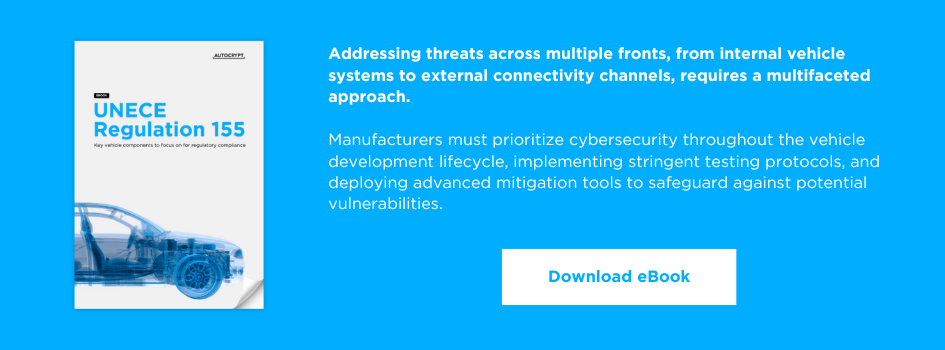ISO 15118 – a seemingly obscure collection of letters and numbers – signifies one of the most progressive standards in electric vehicle (EV) charging. The ISO 15118 standard, formally known as “Road Vehicles – Vehicle to Grid Communication Interface,” establishes the communication protocol between a vehicle and the charging grid. This standard laid down the foundation for Plug & Charge (PnC), a feature that establishes encrypted communication between an EV and a charging station.
While the technology has not been mandated by any government yet, many prominent charge point operators (CPO) and vehicle manufacturers are implementing it. This article will dive into how implementing Plug & Charge would elevate public charging stations to the next level, offering numerous benefits and opportunities for the industry.
Plug & Charge and Cybersecurity
With Plug & Charge the often multi-step charging process becomes as simple as plugging in your EV to the charger. The ISO 15118 protocol enables a seamless charging process where a charger can automatically identify and verify a plugged-in vehicle, authenticating the charging process and processing the payment without human intervention.
This technology requires a high level of communication between vehicles and infrastructure which may raise concerns about security. It is important to note that Plug & Charge was designed with cybersecurity at its core. The technology uses public key infrastructure (PKI) based cryptographic mechanisms to enable two-way authentication and end-to-end encryption during the charging process. By using asymmetric cryptography – a pairing of a public and private security key, neither of which can be decrypted without the other – the charging station is able to verify an EV’s identity and vice versa. This level of encryption guarantees confidentiality in every exchange, creating a secure environment for EV drivers to charge their vehicles without worrying about cyber attacks or data breaches.
Improved User Experience
Plug & Charge significantly improves user experience by making the entire charging process seamless. EV owners set up their payment and authentication information during vehicle purchase and this information is automatically communicated to the charger when the car is plugged in.
In the modern world, where hassle-free is king, public charging stations can generate a lot of value by implementing the technology. Considering how charging is one of the biggest obstacles to EV adoption rates, improving charging experience is one of the sure ways to aid adoption.
According to a survey conducted by BCG, EV drivers ranked charger reliability, charging time, and ease of use among their top priorities when charging in public. Charging stations that implement Plug & Charge to enhance performance on these metrics will improve their competitiveness, simultaneously raising the overall standard for public charging user experience.
Path Toward V2G Implementation
Apart from instant benefits, implementing Plug & Charge creates a foundation for further technological improvements. Most importantly, it paves the way for Vehicle-to-Grid (V2G) implementation. ISO 15118 is designed for vehicle-to-grid communications and grid optimization. Integrating Plug & Charge in public charging stations will equip the infrastructure with the necessary technology for smart charging applications.
Why is this important? The smart charging mechanism in ISO 15118 allows for sustainable management of energy supplied through the grid. It does that by matching the grid’s capacity with the energy demand of electric vehicles plugged in to the grid. This optimization allows vehicles to charge during periods of high energy availability or when overall electricity usage is low, reducing strain on the electricity grid and promoting sustainable energy usage. The benefits of this technology will only grow as EV adoption rates rise with time.
Another feature outlined in ISO 15118 is bi-directional charging, which allows vehicles to receive and supply energy from and back to the grid. This benefits both the grid and EV owners. On the grid side, electric vehicles can serve as mobile energy storage units that supply electricity back to the grid during periods of high demand. On the customer-side, it offers EV owners a chance to earn extra cash or energy credits by selling electricity back to the grid. Bi-directional charging creates a symbiotic relationship between the electricity grid and electric vehicles, helping maintain balance and energy efficiency.
Implementing Plug & Charge in public charging stations presents a significant opportunity to enhance the EV charging experience. High level of cybersecurity, seamless charging process, and readiness for V2G integration make Plug & Charge a valuable investment.
As a trusted PnC implementation partner, Autocrypt worked closely with various CPOs and OEMs to deploy secure PnC. Recently, Autocrypt joined forces with Emobi, a US-based e-mobility hub, to launch the first US-based PnC ecosystem.
As the demand for EVs continues to grow, the adoption of standards like ISO 15118 and features like Plug & Charge will be crucial in supporting the sustainable and efficient expansion of EV infrastructure.
To stay informed and updated on the latest news about AUTOCRYPT and mobility tech, subscribe to AUTOCRYPT’s newsletter.

